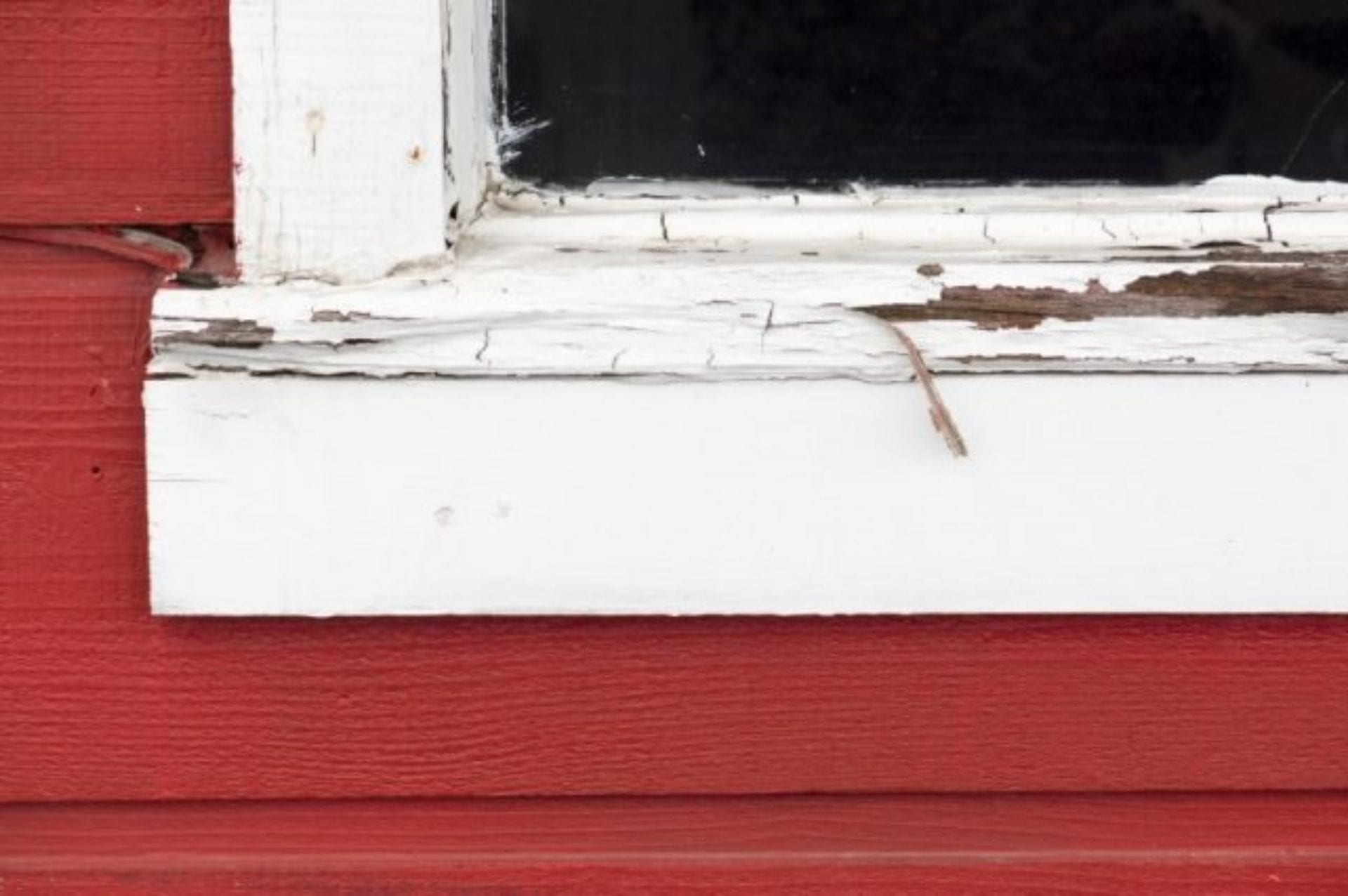A Guide to Rotted Wood Repair
If your home has wood trim, chances are, there is some degree of wood rot in it. The rot will either be very noticeable, concealed in hard-to-see places, or concealed under a thin layer of paint. If you have rotted wood, be aware that it has to be repaired or replaced to prevent water, air and/or bug infiltration into your home.
How to Check for Rotted Wood
Consider walking around your house a few times a year and inspecting the wood for rot.
- Look at the edges of trim, especially where it meets the roof line or meets the ground.
- Look at window sills and other wood components that lay flat and allow water to settle on them.
- If you are unsure if an area is rotted, then gently push on the area with a small screwdriver; if it sinks in and the wood is soft, it’s rotted.
Ok, so you’ve got rot! Let’s talk about why it happened, what can be done to prevent it and options for repairs.
What Causes Wood Rot?
First, wood rot occurs for a couple of reasons but mainly due to the quality of the wood used and the installation method.
Wood Quality
Most tract homes over the past twenty-five years used “finger-jointed” pine wood as the trim. This type of trim is the poorest of quality and typically fails on a home within just a few years. The finger-jointed wood is a piece of trim that has been fabricated/assembled with short pieces (or scraps) of wood that are then glued together at finger joints. The wood is then machined and primed and looks great the first day it’s installed.
However, once the wood gets wet (mostly the end grain) or the paint coating fails just a bit, the finger joints, which are all end grain, quickly soak up the moisture, and the wood rots. Also, the pine wood that is typically used comes from pine trees that are force-grown, which results in a softer product that is less dense than normal wood. If you were to compare old growth pine wood to today’s fast-grown species, you might find a more dense wood that holds up well.
Improper Installation
Another reason wood rots is improper installation methods, mainly not priming or painting the back side and ends of the wood. I can’t tell you how many homes I investigate and price a paint job for that have all of the ends of the trim wood exposed to the elements and unpainted. It’s these ends that soak up water from the house and air and start the rotting process.
Additionally, if the trim wood is installed so that it rests on a roof and the end grain is not sealed, guess what? All that roof water will soak right into the trim wood and it will rot.
The same goes for wood resting on the ground or wood resting directly against masonry or stone. Masonry of any type is very porous, like a sponge: it soaks up water and then transfers that water to the wood, and while the masonry holds up, the wood fails.
Wood Rot Prevention
Proper Installation
Wood should be:
- Decoupled from the masonry with flashing or with an air gap and never rest on the masonry or on the ground.
- Primed and painted on all six sides prior to installation.
That’s right, even the backside of the wood should be painted. If it’s not, the water and moisture from the home will make its way into the wood from the backside as well as the front side. You may have heard of this term called “back-priming,” which is when the component is primed on the back side prior to installation.
Preventative Maintenance
Finally, general preventative maintenance is another way to protect against wood rot. Wood trim in New Jersey should be cleaned, caulked and re-painted every three to seven years depending on its condition. If the wood is not painted regularly, the paint will fail and the wood will not have any barrier to the elements and will soak up water. If it’s not regularly painted, then you can “pay me now or pay me a lot more later.”
Repairing Rotted Wood
Ok, so you back-primed the wood trim, you painted it on all six sides, you kept it away from masonry and rooftop surfaces, and you kept it painted every five years. It should last, right? Unfortunately, even the best maintenance plan sometimes results in rotted wood in New Jersey’s tough, wet environment. Let’s talk about options for fast repairs, general repairs and permanent solutions for rotted wood.
The Quick Fix
A cheaper, faster repair method is to dig out the rotted section, let it dry, then fill the area with epoxy, prime it and paint it. This type of repair works well when you’re trying to save money or if the rotted area is difficult to replace (and when the rotted area is dry enough to accept the filler). Another way to make the repair is to use wood filler. However, be aware that even exterior grade wood filler is porous and typically fails within twelve months, so use epoxy.
General repairs can be made by using pine wood. The worst choice would be finger-jointed, followed by a better choice of clear pine. Clear pine means the wood has no knots. You could remove a section of the rotten wood, prime a new piece all over, paint it one coat, then install it and finish coat it. (Of course, it’s likely to eventually rot again.)
Permanent Wood Rot Solution
A permanent repair can be made by removing the entire piece of wood trim and replacing it with a man-made piece of trim. Most man-made trim is PVC, such as the Azek brand, and it can be shaped and installed the same way as wood. PVC doesn’t have to be painted but looks much nicer caulked and filled and painted white or another trim color.
Boral for Trim
Another permanent trim material is Boral brand. This material comes in a brown color and will acept darker-colored paints such as Tudar Brown. Boral is a partly-recycled poly-ash material, is installed easily, and paints up well. Typically, premium lifetime paint, such as Sherwin Williams Duration, is the best choice for top coating these alternative trim products.
Cedar Wood
If you are looking for a purist solution (no plastic on the house), then consider replacing failed areas of wood with cedar trim wood. Cedar is rot resistant and if properly installed and maintained, will provide many years of service.
Wouldn’t it be nice if in the United States, the standard was to build homes to last hundreds of years, rather than just twenty, thirty or forty before having to start stripping off cheap finger-jointed trim and/or cheap siding? I’m baffled as to why our building codes even allow such inferior products.
What You Should Know About PVC
Also, while PVC appears to be a permanent solution, it has only been out for a short time, and that material too may not really be permanent. It could break down from UV rays and from ozone. PVC can warp and twist and move with drastic temperature changes if installed too tightly or with improper fasteners. Make sure if you go the route of using premium materials you invest in a qualified contractor so that you get sound advice and installation.
Professional Rotted Wood Repair
There is a lot to consider when maintaining and repairing the exterior of your home. All Trades has the expertise and solutions for your rotted wood repair and painting requirements. Call me or send over any questions! I’m here to help and would be very interested in your opinion. I’d be happy to meet with you to look at the condition of your home and to recommend a proven maintenance plan for your trim and house paint.

